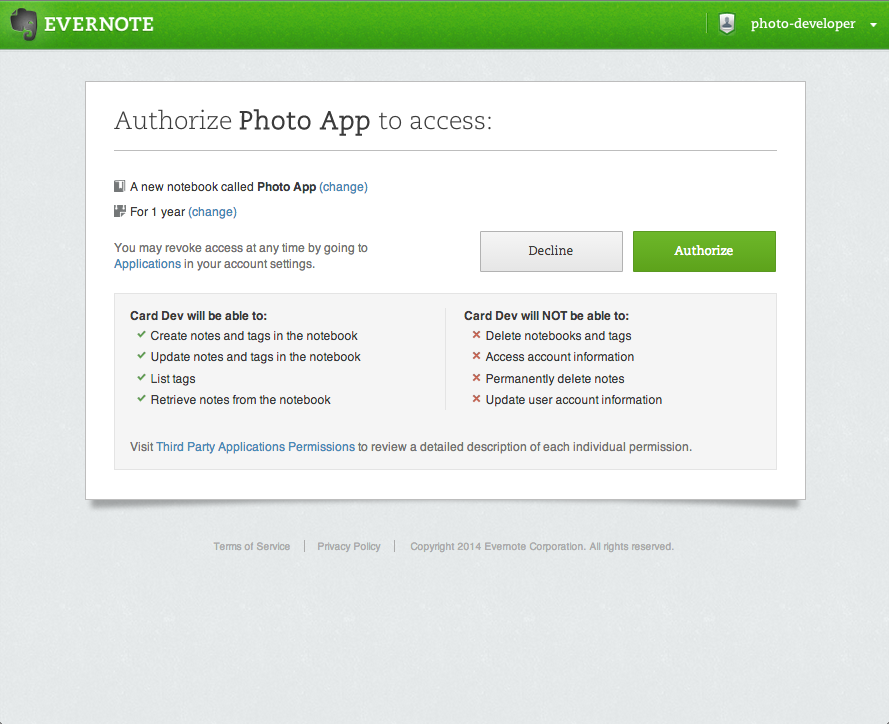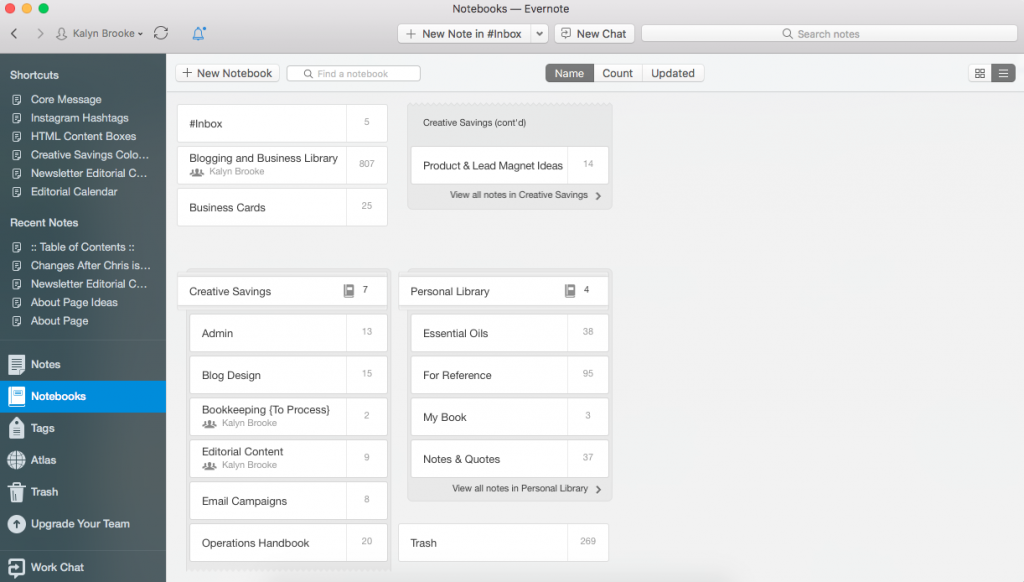App Notebooks
Connecting your application to a single notebook
Evernote Create New Notebook In Stack
The Evernote Smart Notebook is a physical Moleskine journal with a cover and pages. There are different options for the Notebook, including the size and type of page. We’ll get into those later. The basic idea is that you physically write a note or draw a sketch in the notebook with a pen, same as any other pad. The new Evernote Smart Notebook by Moleskine uses Evernote's Page Camera feature to capture the pages of your notebook with your smartphone or tablet. A perfect symbiosis of your analog and digital lives. Plus, each Evernote Smart Notebook comes with a 3 month Evernote Premium subscription! Copy new Evernote notes to your OneNote notebook. When this happens Step 1: New Note. Then do this Step 2: Create Note. Need to collaborate between Evernote and OneNote? With this integration, that'll never be a problem again. You'll connect your Evernote and OneNote accounts, and whenever a new note is added to Evernote, it'll automatically be copied to your OneNote account.
This is a new feature of the Evernote API!

For more information about this new feature for the Evernote API, read our announcement on our developer blog: [POST] Feedback for App Notebooks
Overview
Historically, authorized Evernote API keys have had access to all notes and notebooks in a given user’s account. Moving forward, the Evernote API creation process will give developers the option to limit their app’s access to a single notebook in the user’s account. We’re calling this feature App Notebook. It will provide greater security of user data as well as straightforward implementation for developers.
This document will describe how developers should implement this feature, as well as the user flow. Mosart input devices driver download.
Evernote Smart Notebook
Implementation
By and large, the process of authenticating with the Evernote API will remain the same as with legacy API keys, with a handful of differences.
When an authentication token is issued for an API key configured for App Notebook:
- Calls to
NoteStore.listNotebookswill return a collection containing only the single notebook to which the API key has access. - Calls to
NoteStorefunctions that attempt to access or modify notebooks other than the app’s notebook will result in aEDAMUserExceptionwith thePERMISSION_DENIEDerror code.
To include existing linked or business notebooks as options from which the user can choose their destination notebook, include supportLinkedSandbox=true in the OAuth URL during the authentication process:
https://www.evernote.com/OAuth.action?oauth_token=[..]&preferRegistration=true&supportLinkedSandbox=true

Ctx driver download for windows 10. When a user selects a shared or business notebook as the notebook for use with your application, the OAuth callback will have the sandbox_lnb parameter set to true. Otherwise the sandbox_lnb is set to false by default
Error Handling
It is possible that the user may delete the notebook to which your application has access. In such a case, NoteStore.listNotebooks and NoteStore.listLinkedNotebooks will return empty result sets and NoteStore.getNotebook will result in an EDAMNotFoundException.

Your application should be prepared to handle this situation. Our recommendation is to alert the user as to what happened and prompt them to re-authorize your application, allowing them to select a different notebook.
As with legacy authentication to an entire user’s account, third-party developers should also build their application to elegantly handle the situation in which the authentication token expires or is revoked by the user. See the “Introduction to OAuth” section of our Authentication documentation for more information.
User Flow

As with the OAuth process, the user authentication flow will remain largely the same. Historically, the authentication screen notified the user that a given application would have access to their account for one year and which specific permissions the application would have (create notes, update notes, etc.). The primary difference now is that users will be presented with the option to choose the notebook used by the application requesting authorization. By default, a new notebook will be created in the user’s account called [application name].
Suggesting a Notebook Name
Evernote Delete Notebook
To suggest a notebook name to the user, add supportLinkedSandbox and suggestedNotebookName to your OAuth parameters. Set supportLinkedSandbox to true and suggestedNotebookName to the URL encoded name you would like to suggest to the user. For example:
https://www.evernote.com/OAuth.action?oauth_token=[..]&supportLinkedSandbox=true&suggestedNotebookName=Suggested%20Notebook%20Name
where 'Suggested Notebook Name' is the URL encoded name you would like to suggest to the user. If the user already has a notebook in their account with the name you suggest, that notebook will be selected. If there is no notebook in the user's account with the name you suggest through OAuth, a notebook with the suggested name will be created in the users account. Suggested notebook names must follow the same restrictions as standard Evernote notebook names as outlined in in the API reference documentation here.
The user can choose to select the change notebook option in the OAuth flow for selecting any existing notebooks.
Evernote New Notebook Free
During the Authentication flow, users will have the option to change the default notebook:
Evernote New Notebooks

Evernote Notebook Stack
The selected notebook can be from a user's personal, shared, and business notebooks:
